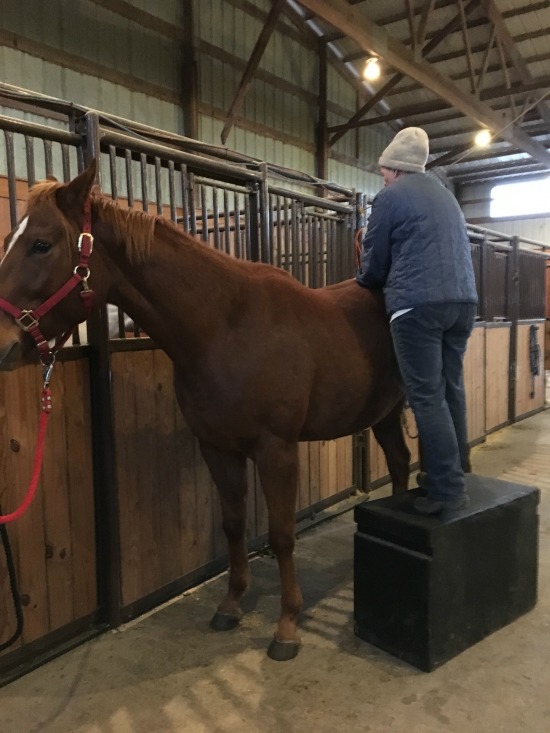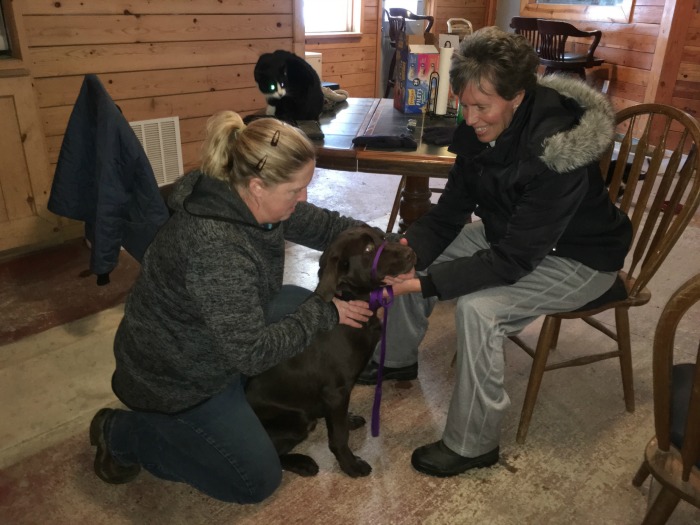Since graduating from Veterinary School almost 30 years ago, I have sought routine chiropractic care for many different aliments for myself. The very first opportunity was when I was plagued with headaches often and in need of medication to be able to function. It was discovered that with all the years of book studies I had lost the curvature of my cervical neck vertebrae. This presented issues for myself and with routine care over the years I have been able to remain medication free for neck and back pain. In those early years in Minnesota, my good friend and chiropracter occasionally would treat an animal and tell me of the success he was having with his routine adjustments. These pets were of course his own since legally he was licensed to only treat 2 legged species. Over the years I started to recognize the need for routine chiropractic care in the 4 legged species and how much they could benefit from adjustments. My only treatment option when chiropractic was not available was offering pain medications that would not correct anything. The medications would reduce the symptoms noted by the client but once off the drugs the symptoms returned.
About 7 years ago, when my daughter was showing in the POA circuit, we requested the help of a Chiropracter to adjust her pony. I remember thinking how interesting it was to watch the process and see the pony respond to the different manipulations. The POA’s gait definitely improved after the adjustment. It was amazing to see the change so soon after the first treatment.
Then about 5 years ago, I discovered Dr. Lisa King. I cannot tell you how many clients I have referred to her as she travels around Central Iowa to many different locations to make adjustments and do acupuncture as needed to improve the lives of her patients. What I can report is all the positive feed back that I get once a client has taken their pet to see her. Their pets are jumping, running, barking, tail wagging, etc., after just a few treatments. Many have been able to come off their medications and have normal daily activity with no reoccurrence. I have had some unbelievers become believers. I have clients that schedule routine maintenance adjustments just because they have seen the importance of preventive maintenance in their pets.
Mobility is such an important part of our lives and that of our pets, so please enjoy the photos that were captured recently when Dr. Lisa King visited a barn in Madison County.
Max is a 6 month old Labrador Retriever that was surrendered to me in October for aggressive unpredictable behavior with its owners. They had been taking him to puppy classes and had enlisted the help of a pet behavioralist to determine the cause of his aggression. After countless hours of working with Max and the family of 4, to see if these issues could be resolved, it was determined removing him from the home was the safest solution for everyone involved. I was contacted and offered to take him in and work with him and determine if something could be done. He had 4 puppy sessions left and I used the Gentle Leader in class and when out for walks with him to make certain he had no opportunity to react aggressively without having a way to control him. On the first evening of class I was working with him on heeling and as I stopped I wanted him to sit. He did not, so I elevated his nose with the Gentle Leader and with my left hand put pressure on his hips to encourage him to sit. In that short moment he broke into a screech and I immediately tightened the Gentle Leader around his muzzle and told him no as I knelt down beside him. Within seconds he quieted and nuzzled up against me in the most submissive and remorseful way. My immediate reaction, “He is in pain.” He needs to see Dr. Lisa King.
Below is his first report showing the areas that were adjusted. Interesting side note, after I returned to puppy class with him 3 days later, 3 different people came up to me and said he looks and acts like a totally different puppy tonight. I had not even told them that he had seen a chiropracter. Dr. King’s comment after completing his treatments was, “He must have had one massive headache.” I did contact the previous owners to inform them of our discovery and as we discussed the situation, I was reminded that he had fallen down some stairs around 8 weeks of age. Possibly some or all of his issues may have been related to that one incident.
This is only one story that I have written about today, but want you to know that this is just one of many. Dr. Lisa King sees many horses in her daily life and has had just as many success stories with them as well. Many feel there is no way a person could adjust a 1000# animal and make a difference. Yet when watching her treat the horses it is not about brute strength but rather the different angles and positions she uses to move the joints back into their proper location. It is about watching the horse become more alert and responsive after she has finished her work. The whole body shake that they do to thank her for her kindness. The owners returning at a later date for yet another treatment since they see remarkable improvements with just one treatment and hope for even more success if they see Dr. King again.
Our animals are not able to tell us when they hurt or why or where. If your 4 legged critter starts or stops doing a behavior, don’t assume that they are being “bad.” It could easily be pain or some other illness. We need to watch for the subtle signs like not jumping up and down anymore, not doing stairs or hesitating before going up or down, lying around and not playing with their humans or the other housemates, aggression that has suddenly appeared, hiding or laying away from everyone as signs that they are not feeling well or in need of some chiropractic care. If you just observe your pet’s daily activities, you will be surprised how many times they run into objects or other pets, how many times they slip or fall when attempting to chase something, drop to the floor with little grace in a big thud, get pulled on their leash or collar while being contained, etc. All of these activities cause wear and tear on their bodies and in the end can lead to pain responses that vary from shaking, to crying, to not eating, limping, panting, acting out with strange behaviors, etc. These symptoms can mimic many other health conditions so it is not wise to assume all panting dogs need to see a chiropracter. Yet it is important to be aware of what a chiropractic treatment can do for your pet. Ask your veterinarian if they feel chiropractic might help your pet and then ask around who in your area may be available to help.




